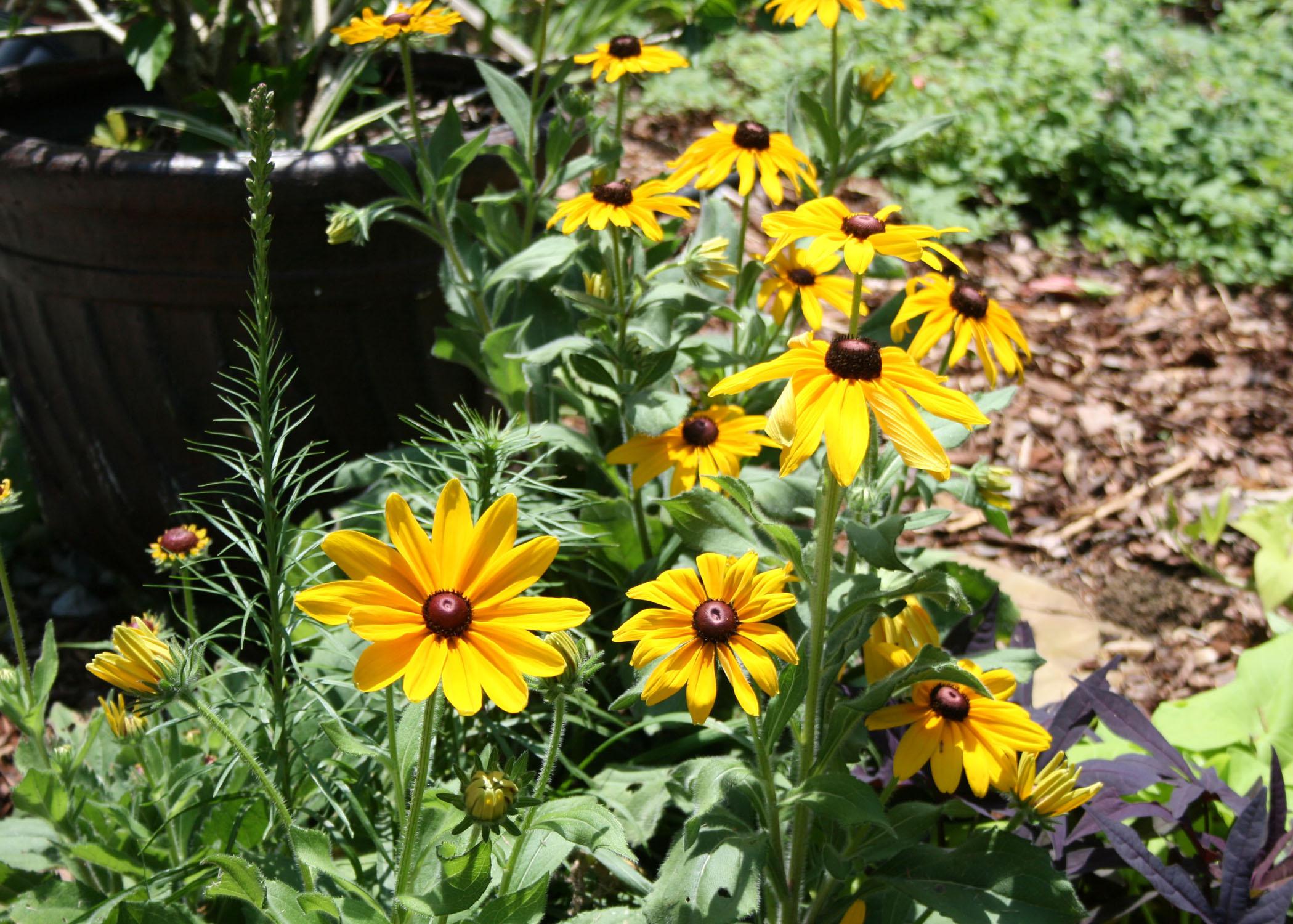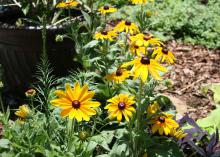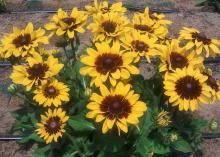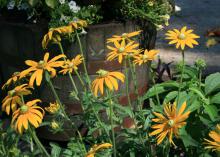Information Possibly Outdated
The information presented on this page was originally released on June 30, 2014. It may not be outdated, but please search our site for more current information. If you plan to quote or reference this information in a publication, please check with the Extension specialist or author before proceeding.
Black-eyed Susans offer summer-long blooming
Some of the most familiar faces seen in Mississippi during the summer are found in our gardens.
Most gardeners across the state recognize the yellow petals and dark centers of Black-eyed Susans. If you have admired them from afar in the past, now is the time to bring some home. There are many selections that look great in the landscape.
Some selections are true annuals, while others are true perennials and everything in between. Pick any kind because all will put on a hot summer show in our hot summer landscapes. If you have a butterfly garden, black-eyed Susans are a must-have plant.
With the color combinations currently available, these are not your grandma’s black-eyed Susans.
A popular variety I have grown over the years is Rudbeckia fulgida Goldstrum. This plant is an old, reliable standby that was named the perennial plant of the year in 1999 by the Perennial Plant Association.
Starting in June, the 32-inch-tall plants produce almost unbelievable numbers of golden-yellow flowers, each having a brown center cone. I always mass plant these in ample landscape beds to let the plants spread and become bold, golden-yellow swaths.
Rudbeckia fulgida Early Bird Gold is a related plant that actually was selected from a planting of Goldstrum. These plants are vigorous bloomers, having flowers with bright yellow petals and a brown center cone. They start blooming in May, which is several weeks before Goldstrum starts in. Early Bird Gold grows to 3 feet tall and has a slow spreading habit.
Rudbeckias have received recognition in Mississippi for their landscape and garden performance.
In 1999, Rudbeckia Indian Summer was selected as a Mississippi Medallion winner. This plant shows off everywhere I’ve seen it growing. The upright stems are sturdy enough to display huge flowers that can be up to a whopping 9 inches across. The petal colors are bright and cheery, ranging from sunshine yellow to warm oranges at the petal bases. Each flower has a delicious-looking, rich, chocolate-brown center cone.
Many Rudbeckia selections display varying degrees of darker colors at the bases of their flower petals. One selection I think should be in every landscape is Rudbeckia Denver Daisy. This plant was developed specifically to celebrate the city of Denver’s 150th anniversary.
The flower petals are a pure, bright yellow with variable splotches of dark red at the base. The petals and stems are covered in soft hairs. This plant is a bit smaller than other Rudbeckias, growing to 24 inches tall and 18 inches wide. Most years, Denver Daisy should be considered a tender perennial and maybe even treated as an annual.
A novel Rudbeckia selection is Irish Eyes. These flowers have an emerald-green center cone that is highlighted by clear yellow petals. Irish Eyes can grow to 3 feet tall, which is large enough for all to enjoy the pretty, 5-inch-diameter flowers.
Plant Rudbeckias in full sun for best flowering and color. They grow best in compost-amended, well-drained soils, but the Rudbeckia tolerates poor, clay soils. They are known and grown for their drought-tolerance, but this trait sometimes comes at the expense of flowering. For best landscape performance, keep the soil consistently moist. The plants will reward you with continued flowering if you water them during dry times.
Rudbeckia are all considered low-maintenance plants, but you should remove fading flowers to keep the plants blooming all summer long.
Home gardeners should take advantage of Rudbeckia’s summer-long blooming by bringing the landscape inside with gorgeous cut specimens. To increase vase life, condition the cut stems by placing them in 100-degree water for about 10 minutes. This precaution opens the vascular tissues for better water uptake.
So enjoy the familiar faces of Black-eyed Susans in your landscape and your house this summer.










